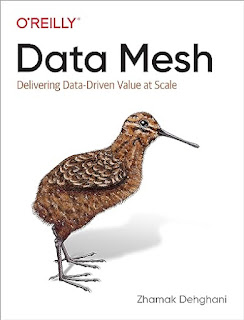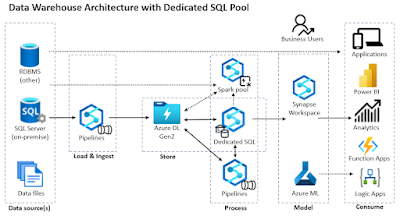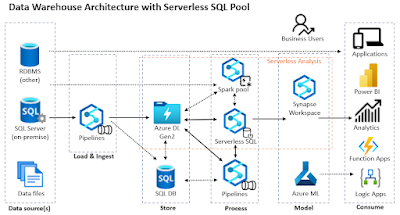Disclaimer: This is work in progress intended to consolidate information
from various sources.
Last updated: 28-Mar-2024
Master Data Management (MDM)
- {definition} the technologies, processes, policies, standards and guiding principles that enable the management of master data values to enable consistent, shared, contextual use across systems, of the most accurate, timely, and relevant version of truth about essential business entities [2],[3]
- {goal} enable sharing of information assets across business domains and applications within an organization [4]
- {goal} provide authoritative source of reconciled and quality-assessed master (and reference) data [4]
- {goal} lower cost and complexity through use of standards, common data models, and integration patterns [4]
- {driver} meeting organizational data requirements
- {driver} improving data quality
- {driver} reducing the costs for data integration
- {driver} reducing risks
- {type} operational MDM
- involves solutions for managing transactional data in operational applications [1]
- rely heavily on data integration technologies
- {type} analytical MDM
- involves solutions for managing analytical master data
- centered on providing high quality dimensions with multiple hierarchies [1]
- cannot influence operational systems
- any data cleansing made within operational application isn’t recognized by transactional applications [1]
- ⇒ inconsistencies to the main operational data [1]
- transactional application knowledge isn’t available to the cleansing process
- {type} enterprise MDM
- involves solutions for managing both transactional and analytical master data
- manages all master data entities
- deliver maximum business value
- operational data cleansing
- improves the operational efficiencies of the applications and the business processes that use the applications
- cross-application data need
- consolidation
- standardization
- cleansing
- distribution
- needs to support high volume of transactions
- ⇒ master data must be contained in data models designed for OLTP
- ⇐ ODS don’t fulfill this requirement
- {enabler} high-quality data
- {enabler} data governance
- {benefit} single source of truth
- used to support both operational and analytical applications in a consistent manner [1]
- {benefit} consistent reporting
- reduces the inconsistencies experienced previously
- influenced by complex transformations
- {benefit} improved competitiveness
- MDM reduces the complexity of integrating new data and systems into the organization
- ⇒ increased flexibility and improves competitiveness
- ability to react to new business opportunities quickly with limited resources
- {benefit} improved risk management
- more reliable and consistent data improves the business’s ability to manage enterprise risk [1]
- {benefit} improved operational efficiency and reduced costs
- helps identify business’ pain point
- by developing a strategy for managing master data
- {benefit} improved decision making
- reducing data inconsistency diminishes organizational data mistrust and facilitates clearer (and faster) business decisions [1]
- {benefit} more reliable spend analysis and planning
- better data integration helps planners come up with better decisions
- improves the ability to
- aggregate purchasing activities
- coordinate competitive sourcing
- be more predictable about future spending
- generally improve vendor and supplier management
- {benefit} regulatory compliance
- allows to reduce compliance risk
- helps satisfy governance, regulatory and compliance requirements
- simplifies compliance auditing
- enables more effective information controls that facilitate compliance with regulations
- {benefit} increased information quality
- enables organizations to monitor conformance more effectively
- via metadata collection
- it can track whether data meets information quality expectations across vertical applications, which reduces information scrap and rework
- {benefit} quicker results
- reduces the delays associated with extraction and transformation of data [1]
- ⇒ it speeds up the implementation of application migrations, modernization projects, and data warehouse/data mart construction [1]
- {benefit} improved business productivity
- gives enterprise architects the chance to explore how effective the organization is in automating its business processes by exploiting the information asset [1]
- ⇐ master data helps organizations realize how the same data entities are represented, manipulated, or exchanged across applications within the enterprise and how those objects relate to business process workflows [1]
- {benefit} simplified application development
- provides the opportunity to consolidate the application functionality associated with the data lifecycle [1]
- ⇐ consolidation in MDM is not limited to the data
- ⇒ provides a single functional to which different applications can subscribe
- ⇐ introducing a technical service layer for data lifecycle functionality provides the type of abstraction needed for deploying SOA or similar architectures
- factors to consider for implementing an MDM:
- effective technical infrastructure for collaboration [1]
- organizational preparedness
- for making a quick transition from a loosely combined confederation of vertical silos to a more tightly coupled collaborative framework
- {recommendation} evaluate the kinds of training sessions and individual incentives required to create a smooth transition [1]
- metadata management
- via a metadata registry
- {recommendation} sets up a mechanism for unifying a master data view when possible [1]
- determines when that unification should be carried out [1]
- technology integration
- {recommendation} diagnose what technology needs to be integrated to support the process instead of developing the process around the technology [1]
- anticipating/managing change
- proper preparation and organization will subtly introduce change to the way people think and act as shown in any shift in pattern [1]
- changes in reporting structures and needs are unavoidable
- creating a partnership between Business and IT
- IT roles
- plays a major role in executing the MDM program[1]
- business roles
- identifying and standardizing master data [1]
- facilitating change management within the MDM program [1]
- establishing data ownership
- measurably high data quality
- overseeing processes via policies and procedures for data governance [1]
- {challenge} establishing enterprise-wide data governance
- {recommendation} define and distribute the policies and procedures governing the oversight of master data
- seeking feedback from across the different application teams provides a chance to develop the stewardship framework agreed upon by the majority while preparing the organization for the transition [1]
- {challenge} isolated islands of information
- caused by vertical alignment of IT
- makes it difficult to fix the dissimilarities in roles and responsibilities in relation to the isolated data sets because they are integrated into a master view [1]
- caused by data ownership
- the politics of information ownership and management have created artificial exclusive domains supervised by individuals who have no desire to centralize information [1]
- {challenge} consolidating master data into a centrally managed data asset [1]
- transfers the responsibility and accountability for information management from the lines of business to the organization [1]
- {challenge} managing MDM
- MDM should be considered a program and not a project or an application [1]
- {challenge} achieving timely and accurate synchronization across disparate systems [1]
-
{challenge} different definitions of master metadata
- different coding schemes, data types, collations, and more
- ⇐ data definitions must be unified
- {challenge} data conflicts
- {recommendation} resolve data conflicts during the project [5]
- {recommendation} replicate the resolved data issues back to the source systems [5]
- {challenge} domain knowledge
- {recommendation} involve domain experts in an MDM project [5]
- {challenge} documentation
- {recommendation} properly document your master data and metadata [5]
- approaches
- {architecture} no central MDM
- isn’t a real MDM approach
- used when any kind of cross-system interaction is required [5]
- e.g. performing analysis on data from multiple systems, ad-hoc merging and cleansing
- {drawback} very inexpensive at the beginning; however, it turns out to be the most expensive over time [5]
- {architecture} central metadata storage
- provides unified, centrally maintained definitions for master data [5]
- followed and implemented by all systems
- ad-hoc merging and cleansing becomes somewhat simpler [5]
- does not use a specialized solution for the central metadata storage [5]
- ⇐ the central storage of metadata is probably in an unstructured form
- e.g. documents, worksheets, paper
- {architecture} central metadata storage with identity mapping
- stores keys that map tables in the MDM solution
- only has keys from the systems in the MDM database; it does not have any other attributes [5]
- {benefit} data integration applications can be developed much more quickly and easily [5]
- {drawback} raises problems in regard to maintaining master data over time [5]
- there is no versioning or auditing in place to follow the changes [5]
- ⇒ viable for a limited time only
- e.g. during upgrading, testing, and the initial usage of a new ERP system to provide mapping back to the old ERP system
- {architecture} central metadata storage and central data that is continuously merged
- stores metadata as well as master data in a dedicated MDM system
- master data is not inserted or updated in the MDM system [5]
- the merging (and cleansing) of master data from source systems occurs continuously, regularly [5]
- {drawback} continuous merging can become expensive [5]
- the only viable use for this approach is for finding out what has changed in source systems from the last merge [5]
- enables merging only the delta (new and updated data)
- frequently used for analytical systems
- {architecture} central MDM, single copy
- involves a specialized MDM application
- master data, together with its metadata, is maintained in a central location [5]
- ⇒ all existing applications are consumers of the master data
- {drawback} upgrade all existing applications to consume master data from central storage instead of maintaining their own copies [5]
- ⇒ can be expensive
- ⇒ can be impossible (e.g. for older systems)
- {drawback} needs to consolidate all metadata from all source systems [5]
- {drawback} the process of creating and updating master data could simply be too slow [5]
- because of the processes in place
- {architecture} central MDM, multiple copies
- uses central storage of master data and its metadata
- ⇐ the metadata here includes only an intersection of common metadata from source systems [5]
- each source system maintains its own copy of master data, with additional attributes that pertain to that system only [5]
- after master data is inserted into the central MDM system, it is replicated (preferably automatically) to source systems, where the source-specific attributes are updated [5]
- {benefit} good compromise between cost, data quality, and the effectiveness of the CRUD process [5]
- {drawback} update conflicts
- different systems can also update the common data [5]
- ⇒ involves continuous merges as well [5]
- {drawback} uses a special MDM application
[1] The Art of Service (2017) Master Data Management Course
[2] DAMA International (2009) "The DAMA Guide to the Data Management Body of Knowledge" 1st Ed.











